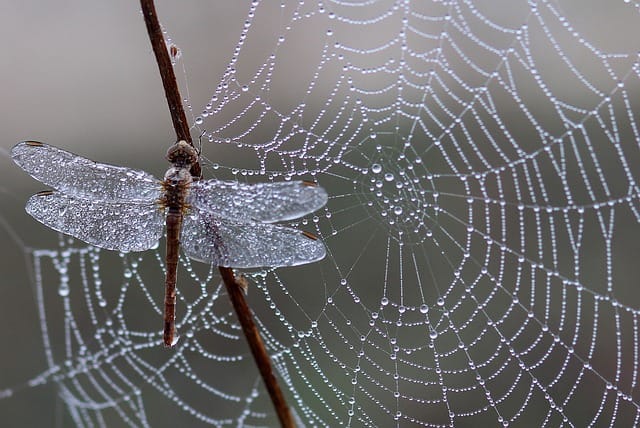Promoting pollinators: Dragonflies
Dragonflies are fascinating insects that play an essential role as pollinators in ecosystems

In this article:
- Introduction to Dragonflies as Pollinators
- Anatomy and Physiology of Dragonflies
- Dragonflies' Role in Pollination
- Morphology of Dragonfly Pollination
- Types of Flowers Attracted to Dragonflies
- Dragonfly Pollination Mechanisms
- Mutualistic Relationships: Dragonflies and Plants
- Environmental Importance of Dragonflies as Pollinators
- Threats to Dragonfly Populations and Their Impact on Pollination
- Conservation Efforts for Dragonflies as Pollinators
- Future Research and Implications for Dragonfly Pollination
- Conclusion
Introduction to Dragonflies as Pollinators
Dragonflies are fascinating insects that play an essential role as pollinators in various ecosystems. Despite being commonly associated with their ability to glide effortlessly through the air and their voracious appetite for mosquitoes, dragonflies also contribute significantly to the pollination of numerous plant species.
Anatomy and Physiology of Dragonflies
Understanding the anatomy and physiology of dragonflies is crucial to comprehend their role as pollinators. Dragonflies have specialized body structures and intricate wing movements that allow them to navigate efficiently and interact with flowering plants.
Dragonflies' Role in Pollination
Dragonflies act as important pollinators by transferring pollen from one flower to another. Their visits to flowers aid in the fertilization process, resulting in the production of seeds and fruits. This process ensures the continuity of plant populations and enhances biodiversity.
Morphology of Dragonfly Pollination
The unique morphology of dragonflies enables them to come into contact with plant reproductive structures, facilitating effective pollination. From their long legs to their specialized mouthparts, each aspect of their anatomy serves a specific purpose in their pollination activities.
Types of Flowers Attracted to Dragonflies
Different plant species have evolved to attract dragonflies by displaying specific characteristics such as flower shape, color, and scent. Understanding which flowers are most attractive to dragonflies can assist in designing gardens and natural habitats that promote their presence.
Dragonfly Pollination Mechanisms
Dragonflies employ various mechanisms to facilitate pollination, including physical contact, collection of pollen deposits on their body parts, and transporting them to other flowers. Exploring these mechanisms can provide insights into the efficiency and effectiveness of dragonfly-mediated pollination.
Mutualistic Relationships: Dragonflies and Plants
Dragonflies and plants often form mutualistic relationships, benefiting both parties involved. The plants provide nectar and suitable habitats for dragonflies, while the dragonflies aid in their pollination. These relationships are essential for ecosystem stability and resilience.
Environmental Importance of Dragonflies as Pollinators
Dragonflies contribute to the overall health of ecosystems by promoting genetic diversity and maintaining plant populations. Their pollination services are essential for the regeneration of habitats, sustainable food production, and overall ecosystem functioning.
Threats to Dragonfly Populations and Their Impact on Pollination
Dragonfly populations face numerous threats, including habitat loss, pollution, climate change, and pesticide use. The decline in their numbers can have detrimental effects on pollination, leading to reduced plant diversity and potential ecosystem imbalances.
Conservation Efforts for Dragonflies as Pollinators
To ensure the continued presence of dragonflies as effective pollinators, conservation efforts must be implemented. These efforts encompass various strategies, such as habitat preservation, restoration, and reducing the use of harmful pesticides.
Future Research and Implications for Dragonfly Pollination
Further research is crucial to better understand the complexities of dragonfly pollination and its implications for ecosystems. Investigating their behavior, preferences, and interactions with specific plant species can guide future conservation efforts and enhance pollination management.
Conclusion
Dragonflies play a vital role as pollinators, contributing to the reproduction and survival of numerous plant species. Recognizing their importance, protecting their habitats, and promoting conservation efforts can ensure the continued presence of dragonflies as valuable contributors to ecological balance and ecosystem resilience.
